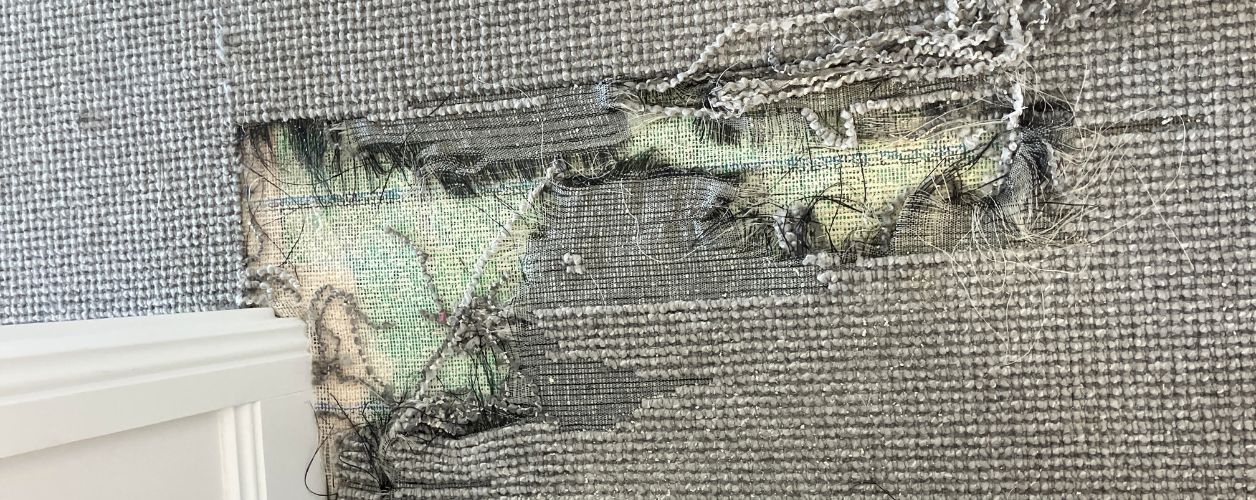Get free quotes within minutes
Carpet Repair for Rentals: A Guide for Australian Tenants and Landlords

Table Of Content
- Introduction
- What's the Difference Between Damage and Wear and Tear?
- What Tenants Must Do to Take Care of Carpets During Their Stay?
- Responsibilities Of The Landlord
- How to Deal with Damaged Carpets?
- Is It Better to Replace or Repair the Carpet?
- Tenant and Landlord Legal Considerations
- Do-It-Yourself vs. Expert Carpet Repair: Rented Carpets
- How Tenants and Landlords Can Prevent Carpet Damage
- How Often Should Carpet be Replaced in Rental Property?
- Conclusion
Carpet repair in rental properties is a common concern for both tenants and landlords in Australia. Tenants are typically responsible for minor stains or damage caused by negligence, while landlords are expected to address normal wear and tear issues, such as flattening or fading. When carpets are damaged beyond repair both parties should document the carpet’s condition at the beginning of the lease to avoid disputes. Professional carpet cleaning, patching, or even full replacement may be necessary depending on the severity of the damage. Regular maintenance and prompt action can also help prolong the lifespan of carpets and reduce repair costs.
Regular Use, spills and accidents can damage the carpets and their beauty over time. Some restoration rules must be known to the tenant and landlord. Here we will learn about the different sides of carpet repair for rental properties, these involve everyday carpet issues, techniques to manage the damage, and advantageous tips to keep carpets in good condition.
What's the Difference Between Damage and Wear and Tear?
This difference matters because it decides who will pay for repairs or replacement work.
Wear and Tear
It is the pulling of carpets with daily use. Here are the main kinds:
- Fading due to sunlight or colour changes due to UV rays.
- Compressed carpet fibres in crowded spots.
- Collection of dust and dirt
- Small areas of fuzzing from people stepping.
These problems occur in rental properties and the tenant hasn't any fault in this. It must be taken care of by the landlord.
Carpet Damage
Any spoil greater than normal carpet aging is damage to be thought about. It involves:
- Blazes from cigarettes or candles.
- Stains from liquid spills if not cleaned instantly.
- Rips in the rug occurred due to furniture, pets, or accidents
- Significant holes or rips due to misusage or mishaps.
If tenants produce damage through improper use, they are required to change for any repair or replacement. It will help settle any argument about carpet damage and make sure that the right person sets it right.
What Tenants Must Do to Take Care of Carpets During Their Stay?
The tenants must keep the rented property in good condition by looking after the carpets. Tenants should also protect against the destruction that goes over wear and tear. Here are the main things tenants can do to care for carpets:
Regular Maintenance And Cleaning
- Vacuuming: Removal of dust and dirt that may lead to early damage slowly. Tenants must vacuum the carpets in routine to decrease health problems.
- Spot Cleaning: Stains and spots should not be authorized to make holes in the carpet fibres. They can be easily removed if cleaned properly. For different types of marks, tenants should utilize suitable cleaning agents and methods.
Early Reporting Of An Issue
Informing the landlord or property manager when you notice any occurring damage or deterioration early enough would allow the landlord to flag inspection possibilities and prevent further damage from occurring rather than having the issue repaired.
- Diminishing Heavy Traffic: Placing area rugs or mats in the paths that encounter the most traffic, helps to minimize wear and tear in these spots.
- Furniture Pads: To keep from making deep gouges or indentations in the carpet, use pads under furniture legs.
- Carpets and Pets: Hair loss, urine and scratches are some of the greatest destroyers that pets create on carpets. Tenants should use care while handling these pets so that damages do not occur to the flooring.
In following these simple rules of maintenance, the tenants contribute to the carpet's conditions while they are occupying the same.
Responsibilities Of The Landlord
The landlord is responsible to the extent that it should keep rented properties clean, safe, and habitable premises imposed upon. That also includes the maintaining of carpets in good condition and replacing or repairing them when worthy or no longer functional.
The landlord needs to fix all damaged or badly maintained carpets before the tenant moves in. It should also be done at the beginning of the lease.
Fixing Typical Damage and Wear
Normal wear and tear is very common as the carpet's age. To keep the home worth living in, the landlord must repair damaging indicators, for instance, compressed fibres or minimal discolouration. It is mainly the responsibility of the landlord to put back the carpets if there is some noticeable wear after a tenant leaves.
Taking Care of Carpet Damaged by Tenants
The landlord may ask for the amount to make arrangements for repairs at the tenant’s charge if damage outcomes from the tenant’s carelessness. This part covers things like burns on carpets, spill stains that have not been cleaned up, and pet destruction. The landlord can also ask for compensation out of the rental bond, or if needed, the judicial system if the tenant denies paying for any repair work.
How to Deal with Damaged Carpets?
The following steps must be followed by both landlords and tenants in case of managing carpet damage:
- Keep A Record Of The Damage: The damage must be quickly recorded by both sides. Taking pictures or videos can be used as proof in court if required.
- Report the Damage Right Away: If tenants notice any damage to the carpet, they should bring this to the property management or landlord immediately. That can be professional assistance for repair or talking about renewing the carpet. Landlords must act rapidly to solve the difficulty.
- Evaluation and Settlement: If there is considerable damage, it could be needed to have an expert assess the damage and provide options for repair or substitution. This assures that everyone is in unity about how serious the problem is.
Is It Better to Replace or Repair the Carpet?
One of the most important options after carpet damage is to put back the damaged carpet or have it restored. Given are some points to think about:
- Small Problems: Some repairs are generally enough for minimal issues such as little burns, loose seams, or light spots. These issues can immediately be solved by a skilled carpet cleaner or repair specialist.
- Extreme Damage: Replacement of the carpet may be the best strategy if it has crucial damage, such as huge tears, deep burns, or stains that are unremovable. In some cases, carpet dyeing may be a cost-effective alternative to replacement, especially for widespread discolouration or faded areas.
- Cost Factors: It is essential to balance the cost of replacement of the carpet with the cost of repairing it. It might be less costly to replace the carpet instead of making repairs if it is getting close to the end of its useful life.
Tenant and Landlord Legal Considerations
Though landlords and tenants have defined rights and responsibilities regarding carpet maintenance. Tenants and landlords can seek advice from the local tenancy authority for suggestions if there is an argument regarding carpet damage or repair expenses. This makes sure that all parties are obeying the applicable legislation about preservation, repairs and the state of the property.
To stop disagreements over the bond or repair costs, tenants should always make sure to take photos and record the carpet issues when they move in and out. Landlords are also responsible towards keeping the property worth living in and taking immediate care of any wear and tear to the carpet.
Do-It-Yourself vs. Expert Carpet Repair: Rented Carpets
Main damage should always be handled by a professional carpet repair expert, even though landlords and tenants can tackle some small carpet repair issues.
Do It Yourself Carpet Repair
- Carpet Patching: A piece of matched carpet could be able to be used to mend any small area of the damaged carpet.
- Stain Removal: Everyday household items such as baking soda, vinegar and some do-it-yourself stain removers, can be utilised to pull out a variety of carpet stains.
Expert Repair
An expert should be called in for serious damages like burns, deep spots or vast tears. The destruction can regularly be easily repaired by a carpet restoration specialist, extending the carpet’s lifespan.
How Tenants and Landlords Can Prevent Carpet Damage
In rental houses, stopping carpet damage is always more advisable than dealing with repairs. The given advice can apply to both landlords and tenants:
Regarding Tenants:
- Frequent Cleaning: To keep away from filth accumulation, vacuum carpets regularly.
- Clean Spills Right Away: To prevent stains from hardening, clean spills swiftly.
- Use Rugs: To save the carpet, place rugs or mats in busy areas.
Regarding Landlords:
- Offer Regular Maintenance: To keep carpets in good condition, get them professionally neat routinely.
- Install Protective Features: Think about placing solid flooring in high-traffic areas or carpets in less potential problem areas.
How Often Should Carpet be Replaced in Rental Property?
How often should carpet be replaced in a rental Australia? While there’s no strict rule, general guidance suggests every 7–10 years, depending on the condition. According to landlord carpet replacement law, landlords are responsible for replacing carpets when they become unsafe or excessively worn. However, standard carpet wear and tear rental tenants create over time is considered normal, and tenants aren't liable for it. Regular inspections help determine when replacement is necessary, ensuring a safe and clean living environment for tenants.
Conclusion
In the case of rental properties, carpet servicing is key to maintaining the property’s quality and assuring a valuable experience for both landlords and tenants. Both sides may avoid arguments and guarantee that carpets remain in a good state during the tenancy period. Both parties must take motivated measures to maintain carpets and immediately solve problems. Understanding how to treat carpet damages in the right way, may make all the difference in keeping even a rental home cosy and ultraclean.
YOU MIGHT ALSO BE INTERESTED IN

Carpet Rippling: Common Causes, How to Prevent It, and the Best Fixes
Capital Cities
- Carpet Repair Services Services in Melbourne
- Carpet Repair Services Services in Brisbane
- Carpet Repair Services Services in Sydney
- Carpet Repair Services Services in Adelaide
- Carpet Repair Services Services in Perth
- Carpet Repair Services Services in Canberra
- Carpet Repair Services Services in Hobart
- Carpet Repair Services Services in Darwin












